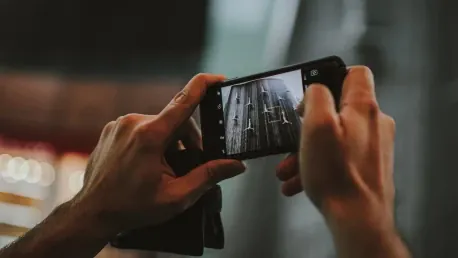Enhancing the quality of photos taken in low-light conditions has long been a challenging task for smartphone manufacturers and app developers alike. With the rapid advancement in camera technologies, users have begun to expect better performance from their devices even in challenging lighting scenarios. Google, leveraging its expertise in artificial intelligence and machine learning, has made strides in this area with the introduction of its Camera Extensions API. This API allows developers to incorporate advanced features like Night Mode, Bokeh, and Face Retouch directly into their apps. The main focus of this recent development is improving the low-light photo quality on Android devices. These enhancements are currently available to a select group of Pixel and Galaxy phones. But can this new API truly revolutionize low-light photography on Android?
The Impact of Night Mode API on Current Devices
Until recently, Night Mode’s availability has been somewhat limited, restricted to specific high-end devices like Google’s Pixel 6 and newer models, as well as certain Galaxy phones, including the S24 Ultra, Flip 6, and Fold 6. These devices have demonstrated significant improvements in capturing images under poor lighting, thanks to Google’s sophisticated algorithms. The main allure of Google’s Camera Extensions API lies in its ability to simplify and streamline the integration of these advanced features into various applications, allowing them to tap into the device’s enhanced camera capabilities. Currently, this API has allowed applications like Instagram and Snapchat to offer significantly better photo quality in low-light conditions, leveraging Night Mode to make images clearer and more detailed without the need for additional lighting.
The success of this implementation has not gone unnoticed. Users of these supported devices have reported noticeable improvements in their photos’ brightness and clarity when using these apps. By recognizing when low-light conditions are present and automatically activating Night Mode, the Camera Extensions API has eliminated the guesswork for users and enhanced the overall user experience. This seamless interaction between hardware and software underscores the potential for more widespread adoption across other Android devices. Google’s upcoming Android 16 release further cements this potential by introducing the Night Mode Indicator API, which categorizes low-light detection into three states: UNKNOWN, OFF, and ON. This inclusion aims to provide apps with even more granular control over when and how to activate Night Mode, ensuring optimal settings for every photo.
Future Expansions and Implications
Google’s development plans extend beyond just a handful of flagship models. The company aims to broaden the availability of these camera enhancements across a wider range of devices. By working closely with manufacturers and app developers, Google hopes to ensure that users of many different Android smartphones can enjoy the benefits of these advanced camera features. This inclusive approach is a significant step toward democratizing high-quality smartphone photography, particularly in low-light environments. As this technology rolls out to more devices, it raises the question of whether increased support might compel other app developers to leverage these APIs, thereby elevating the standard of in-app photography across the board.
For instance, if Snapchat’s integration on Pixel phones is any indication, it is only a matter of time before similar enhancements become available on other apps and devices. Such developments would undoubtedly contribute to the reshaping of how we perceive and use smartphone cameras in darker settings. The advances spurred by Google’s Camera Extensions and Night Mode Indicator APIs also present broader implications for the tech industry. Integrating sophisticated camera functionalities directly into third-party applications represents a major shift from relying solely on default camera apps. Not only does this enhance the user experience, but it also encourages more innovation from developers seeking to provide distinctive, high-quality features within their apps.
Conclusion: The Road Ahead for Low-Light Photography
Google’s ambitions extend well beyond just a few flagship models; the company seeks to bring these camera improvements to a broader range of devices. By partnering closely with manufacturers and app developers, Google aims to make advanced camera features widely accessible to diverse Android smartphones. This inclusive strategy is crucial for democratizing high-quality smartphone photography, especially in low-light conditions. As this technology becomes available on more devices, it raises the question of whether other app developers will start using these APIs, thereby elevating the standard of in-app photography universally.
Take, for example, Snapchat’s integration on Pixel phones: it hints that similar enhancements will likely roll out to other apps and devices soon. These developments are set to reshape our understanding and usage of smartphone cameras in low-light settings. The evolution driven by Google’s Camera Extensions and Night Mode Indicator APIs also holds significant implications for the tech industry at large. Implementing advanced camera features directly into third-party applications marks a significant shift from relying solely on default camera apps. This not only enhances the user experience but also spurs innovation from developers aiming to offer unique, high-quality features within their apps.









